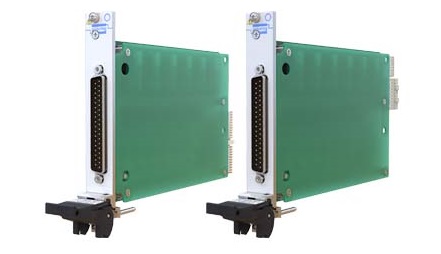Latest version of PXI/PXIe 6-channel 300mA battery simulators updated with greater voltage isolation to allow BMS test with battery stacks up to 1kV
Pickering Interfaces has released the latest version in its 41/43-752A range of battery simulator modules. Ideal for EV battery stack emulation in BMS test applications, the 41/43-752A-111’s increased voltage isolation (now 1000V) will be essential as the EV industry shifts from 400V to 800V architectures.
Targeting EV (electric vehicle), electric aircraft and other automotive, aerospace and energy storage applications, the battery simulator modules only occupy a single PXI or PXIe slot. The 41-752A-111 (PXI) and 43-752A-111 (PXIe) are 2, 4 or 6-channel battery simulators capable of supplying up to 7 V and 300 mA per channel. The channels are fully isolated from ground and from each other, allowing series connection to simulate batteries in a stacked architecture. The 1kV isolation barrier allows the module to be used as a lower power version of a battery stack, representative of those used for vehicle propulsion.
Each channel on the modules can sink up to 300 mA to simulate a battery under charge and provide independent power and sense connections, allowing the simulator to sense a remote load and correct for wiring losses. Designed to respond to dynamic loads, the battery simulator minimizes the need for local decoupling capacitors at the load. The module also can independently read the voltage at the load and current for each channel, either programmatically or via a manual soft front panel.
Modules can be combined with other Pickering PXI switch and simulation modules, including high voltage switching, fault insertion, thermocouple simulation, and RTD simulation, as well as with other vendors’ PXI modules, such as a CANbus interface, to create a fully flexible BMS (battery management system) test system. The 41/43-752A can also be used as a 6-channel fully isolated power supply with independent sense lines on each channel.
Simulation Product Manager at Pickering, Paul Bovingdon comments: “With most of the EV industry expected to shift from 400V to 800V architectures by 2025, unlocking significantly faster charge speeds and helping address range anxiety, the 41/43-752A-111’s increased voltage isolation will be vital to support BMS test with battery stacks of up to 1kV.”
Pickering provides extensive software support for all its products, allowing users to design their applications with the operating system and programming languages (C/C++, .NET, Python, LabVIEW/LabWindows, MATLAB, etc.) of their choice, making integration with their system seamless. Users can choose between all Microsoft-supported Windows versions, popular varieties of Linux, and other real-time hardware-in-the-loop (HIL) tools such as VeriStand, LabVIEW RT and QNX.
- UK manufacturing steps up to COVID-19 crisis - April 2, 2020
- Clustering Innovation - March 12, 2020
- A Global Monitor - March 6, 2020

